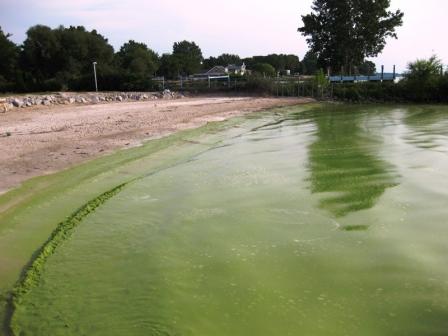Indicators: Chlorophyll a
What is chlorophyll a?
Chlorophyll allows plants (including algae) to photosynthesize, i.e., use sunlight to convert simple molecules into organic compounds. Chlorophyll a is the predominant type of chlorophyll found in green plants and algae.

Why is chlorophyll a important?
Chlorophyll a is a measure of the amount of algae growing in a waterbody. It can be used to classify the trophic condition of a waterbody. Although algae are a natural part of freshwater ecosystems, too much algae can cause aesthetic problems such as green scums and bad odors, and can result in decreased levels of dissolved oxygen. Some algae also produce toxins that can be of public health concern when they are found in high concentrations.
What can chlorophyll a tell us about the condition of the water?
One of the symptoms of degraded water quality condition is the increase of algae biomass as measured by the concentration of chlorophyll a. Waters with high levels of nutrients from fertilizers, septic systems, sewage treatment plants and urban runoff may have high concentrations of chlorophyll a and excess amounts of algae.
